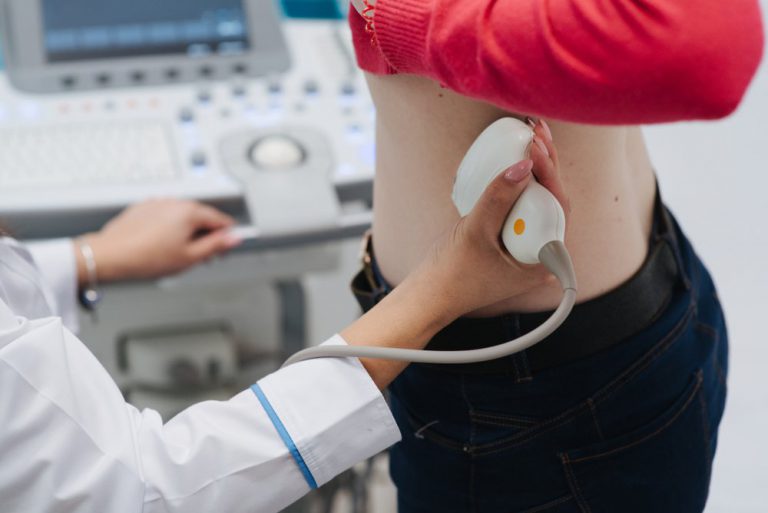Robotic surgery is the current state of art system of physically manipulating the internal organs in a precise manner in order to remove the lethal diseases like cancers, repair the dysfunctional organs or perform any other procedure with minimal disturbance to adjacent tissues .This translates into minimal blood loss, little post operative pain, early recovery and a shorter stay in the hospital. In order to understand how it occurs, one should imagine if the following,
- The size of human wrist were to be reduced to just less than a centimetre and the pair of eyes were placed within a space of little more than a size of pen
- These were inserted into the human body through small holes, sufficient enough to allow them to reach the target organ within the human body
- There would hardly be any disturbance to other organs of the body while a precise procedure could be carried out within the depths of human body.
Robotic surgery is the surgery of future and robotic urologists can,
- Prevent Deaths and prolong life in patients with cancer of prostate
- Remove cancer and preserve kidney in patients with kidney cancer
- Allow precise reconstruction in cases of birth defects of urinary tract like UPJ obstruction
- Treat urinary leakage of urine through urinary fistulae like VVF
Role of Robotic Urologists Surgery in cancers of the urinary tract
Advent of robotic surgery is a huge leap forward in the way surgical treatment of cancers of urinary tract is being done in 21st century. Not only does it allow surgical procedures to be carried out in a precise manner, it translates the entire experience of the patient into less traumatic one with minimal pain, lesser hospital stay and quicker recovery.
For robotic surgery to be useful, it is important to diagnose cancer at early stages. Various health agencies are running programs for early diagnosis of cancer, which eventually lead to the overall goal of reducing the suffering and prolonging life in patients with this dreadful disease.
Cancer of Prostate
Cancer of prostate is the commonest cancer in males. Once diagnosed, this can be categorized into
- Organ confined disease
- Locally advanced cancer
- Wide spread disease (metastatic cancer)
Early diagnosis of this disease can be facilitated by a simple blood test called PSA. This should be done in men above 50 years of age or in younger men if any of their blood relatives have had a diagnosis of prostatic cancer. If the disease is confined to prostate gland, then it is only logical to remove the gland and aim to cure the cancer. Removal of prostate gland is technically challenging as it is located at the bottom of the body, in the depths of pelvis. Even more difficult is the process to reconstruct the junction between urethra and the bladder. Before the advent of robotic surgery, it was a very difficult operation necessitating blood transfusions and long hospitalization. Robotic surgery has made it a relatively comfortable operation, both for the patient as well as the operating surgeon. Technically it is called ‘Robotic assisted radical prostatectomy’. This operation now allows shorter anaesthesia time, quicker recovery and early discharge from the hospital; usually within 2-3 days of surgery. The results in terms of control of urination and preservation of male sexual function are much better than the open operation. The outcome in terms of control of cancer is also comparable with open surgery.
Cancer of the Kidney (Renal Cell carcinoma)
Cancer of the kidney is another disease where robotic surgery has made a paradigm shift. With advent of ultrasound and its widespread use as a screening modality, a number of otherwise asymptomatic mass lesions are being identified in kidneys, which on further investigation turnout to be cancerous in nature. In a way it is fortunate to pick up early cases of kidney cancer as these can be precisely removed from the body using robotic surgery. Not only does this aim to cure the cancer, it also preserves the kidney. This procedure, termed as ‘Robotic Partial Nephrectomy‘ involves cutting away the cancerous portion of the kidney and sewing the cut edges to retain the rest of it. This involves minimal blood loss and quick recovery of the patient. Robotic partial nephrectomy is a boon for patients with critical kidney function or patients who develop cancer in their only ‘single kidney ‘.
Thus, robotic surgery not only saves life of a patient with cancer of kidney, it also helps in retaining the kidney if the cancer is diagnosed at an early stage. However, if the disease is detected at a later stage, the kidney with all its layers and lymphnodes need to be removed. This is called Robotic Radical Nephrectomy.
Cancer of the Urinary Bladder
Cancer of the urinary bladder when invades into its deeper layers, then the whole bladder needs to be removed in order to save the life of the patient. Robotic surgery is very useful for removal of bladder and lymph nodes situated in the pelvis. (Robotic Radical cystoprostatectomy with urinary diversion) Having removed the bladder, reconstruction of ‘neobladder’ or a new bladder from a segment of intestine and connecting it to the urethra is facilitated to a great extent by the robotic surgery.
Cancer of Testis
Cancer of the testis in males is notorious for spreading to the lymph nodes in the depth of abdomen, close to the large blood vessels like aorta and inferior vena cava. In certain situations, these deep seated lymph nodes need to be removed surgically (Robotic Retroperitoneal Lymph node dissection). Robotic surgery makes this reasonably simpler than open surgery by reducing the period of post operative recovery of the patient.
Robotic Surgery for non cancerous diseases of urinary tract
Robotic Pyeloplasty
In a case of birth defect affecting the outflow of the urine from the kidney into the tube called ureter, there is a progressive accumulation of urine in the kidney adversely affecting the kidney function. This can eventually lead to complete loss of the kidney function. This condition is technically called PUJ obstruction ( Pelvi Ureteric Junction Obstruction) Robotic surgery allows a precise repair of this birth defect with minimal disturbance to body physiology and is called Robotic Pyeloplasty
Robotic Re implantation of Ureter
Injuries or birth defects causing a damage to the lower end of the tube draining urine from the kidneys to the urinary bladder (ureters) can lead to back pressure on to the kidneys causing them to malfunction. These problems can be surgically corrected using Robotic system and are called Robotic Re – Implantation of Ureter
Repair of Vesico Vaginal fistula (VVF)
Urinary leakage in women following a pelvic surgery or child birth usually occurs due to a hole in the urinary bladder this condition is called a vesico vaginal fistula (VVF). These holes can be very precisely repaired using the Robotic system of surgery.
Ureterolysis for Retro peritoneal Fibrosis (RPF)
Obstruction to ureters can occur due to certain rare conditions like retroperitoneal fibrosis (RPF) Robotic Ureterolysis is a very promising and useful procedure for such situations.
Nephrectomy for non cancerous diseases
Removal of badly damaged and infected kidneyic Nephrectomy which has distinct advantages over open or laparoscopic procedure




